#world fair 1939
Text

Gala and Dalí in the ticket booth of the pavilion “Dream of Venus” by Dalí for the New York World Fair (1939)

Facade of the pavilion “Dream of Venus” conceived by Salvador Dalí for the New York World Fair (1939). Ph. Julien Levy (AIC)
view & read more on wordPress
The pavilion featured a spectacular facade full of protuberances, vaguely reminiscent of the Pedrera building by Antoni Gaudí. The main door was flanked by two pillars representing two female legs wearing stockings and high-heeled shoes. Through the openings of the irregular façade, visitors could see reproductions of the Saint John the Baptist by Leonardo da Vinci and The Birth of Venus by Botticelli. Between the painter's initial ideas and the [...]
#dali#salvador dali#dream of venus#surrealism#surrealist artist#pavilion#facade#façade#world fair 1939#1930s#NY world fair#dalí#NYC world fair#surrealisme#salvador dalí#julien levy
495 notes
·
View notes
Text
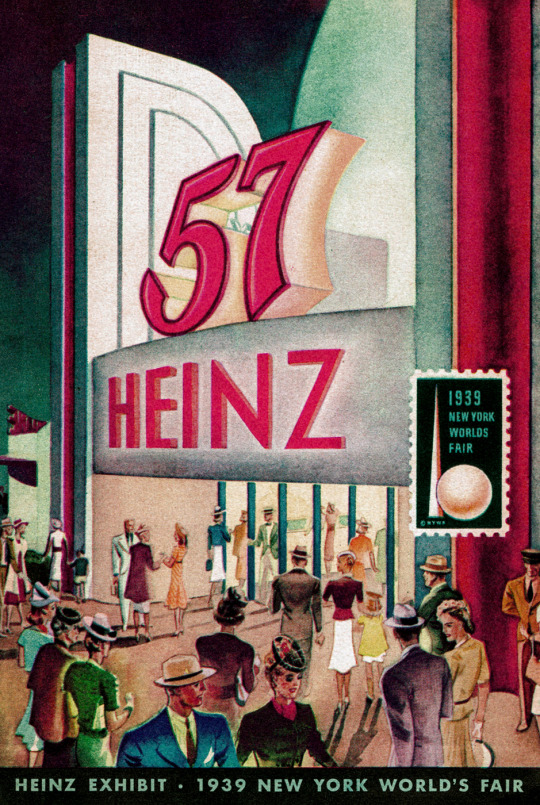
Heinz Exhibit catalog - 1939 New York World’s Fair.
#vintage illustration#vintage advertising#world’s fair#1939#1939 world’s fair#new york world’s fair#the 30s#heinz#heinz 57#new york city
217 notes
·
View notes
Text
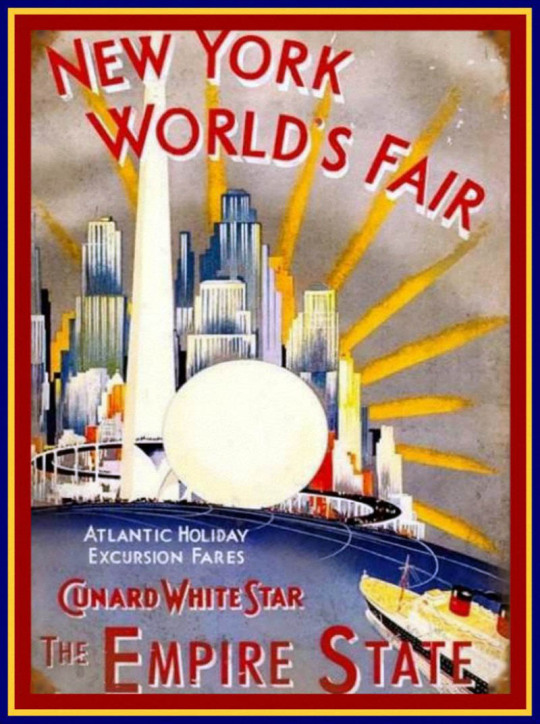
The Cunard Lines' poster for the New York World's Fair, 1939. Artist unknown.
Photo: Zazzle
#vintage New York#1930s#1939 World's Fair#NY World's Fair#Cunard Lines#poster#vintage poster#NYC poster#Art Deco
151 notes
·
View notes
Text
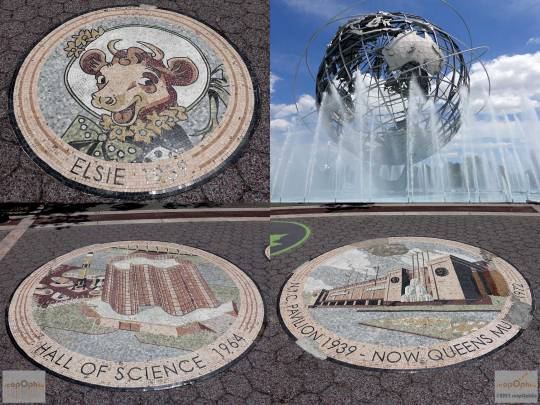
scopOphilic_micromessaging_932 - scopOphilic1997 presents a new micro-messaging series: small, subtle, and often unintentional messages we send and receive verbally and non-verbally.
#scopOphilic1997#scopOphilic#digitalart#micromessaging#streetart#graffitiart#graffiti#Queens#nyc#photographers on tumblr#original photographers#ArtistsOnTumblr#2016#Flushing Meadow Park#Worlds Fair 1939 1964#Elsie#Hall Of Science 1964#NYC Pavilion 1939- Now Queens Museum 1972#Unisphere#fountain#brown#tan#maroon#blue#water#grey#silver
73 notes
·
View notes
Text

Inside the Food Building. New York World's Fair. 1939. Fair guide in French.
Internet Archive
#new york world's fair 1939-40#food pavilion#digestion#exhibition#guidebook#nemfrog#1939#1930s#digestive system
105 notes
·
View notes
Text
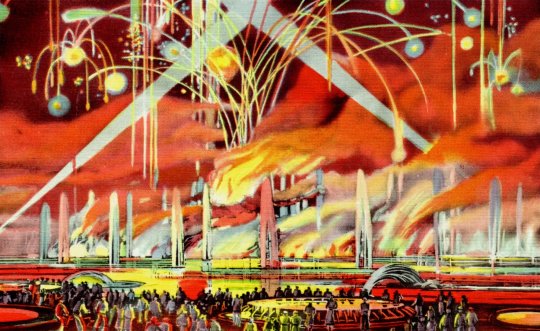
Lagoon of Nations, New York World's Fair, 1939.
66 notes
·
View notes
Text

Recent Acquisition - Ephemera Collection
World's Fair 1940. New York.
Your World's Fair, From May 11, 1940
420 notes
·
View notes
Text
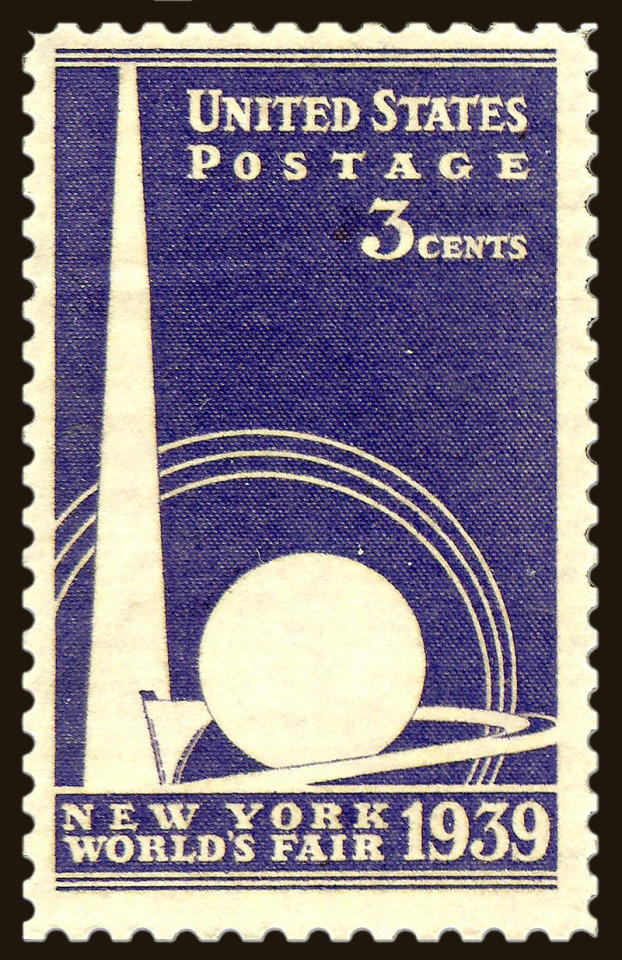
Wallace Harrison and J. Andre Fouilhoux, architects
Trylon & Perisphere

14 notes
·
View notes
Photo

1939 World’s Fair on San Francisco Bay - Golden Gate International Exposition // Design by Shawl, Nyeland and Seavey
Source
#world's fair#1939#san francisco#treasure island#golden gate international exposition#art deco#poster#illustration
144 notes
·
View notes
Text
For #WorldPenguinDay check out this delightful Art Deco penguin cocktail shaker/jug!

Emile Arthur Schuelke (1901–86) for the Napier Company
Cocktail shaker or jug
special edition for the 1939 New York World's Fair (originally designed 1936)
silver plate, 31.6 x 13.2 x 11.5cm
Royal Collection Trust
"A silver plated cocktail shaker or jug in the shape of a penguin, with hinged beak as pourer, wings to side, S-shape handle and claw base. The base is stamped with the Napier patent mark D-101559.
Designed by Emile Arthur Schuelke (1901–86), an art deco penguin cocktail shaker was first produced for the Napier Company in September 1936. This special edition for the New York World’s Fair, complete with octagonal blue emblem on the penguin’s head, may have been produced to complement an exhibit called Admiral Byrd’s Penguin Island. Taking its name from the American explorer Rear Admiral Richard Byrd Jr (1888–1957), who had made several expeditions to Antarctica, Penguin Island featured fifty live penguins, the largest number ever shown. Alongside them was Admiral Byrd’s personal team of five Huskies, born and reared at Little America, Antarctica; and Advance Base, the hut in which Byrd had stayed during his most recent expedition to Antarctica in 1934–5.
Provenance: From the New York World's Fair, 1939. Probably acquired by King George VI and Queen Elizabeth during their visit to the Fair on 10 June 1939, as part of their tour of US and Canada. Later recorded in the collection of Queen Elizabeth the Queen Mother at Clarence House."
#penguin#bird#birds in art#animal holiday#World Penguin Day#Art Deco#20th century art#1930s#Napier Company#Emile Arthur Schuelke#cocktail shaker#decorative arts#metalwork#silver#World's Fair#1939 World's Fair#Royal Collection Trust#animals in art
49 notes
·
View notes
Text


*dusts blog off* so it's been a hot minute... here take some old-ish drawings of my oc stevie at the start of his part of the story featuring one of my guilty pleasures, decorated denim jackets
(reblogs > likes)
#artists on tumblr#traditional art#original characters#ocs#stevie maple#it's based off of a levi's 1930s style jacket I saw and momentarily drooled over and because I'll never be able to afford it#I gave one to stevie. and it works since it's secondhand. I've drawn it since but cba taking a picture of the drawing#and I added a 1939 world's fair patch to it#vintage king (wearing a twenty-five year old jacket)#also I say decorated because it's not just patches. so
12 notes
·
View notes
Text
Dalí · Dream of Venus costumes · 1939
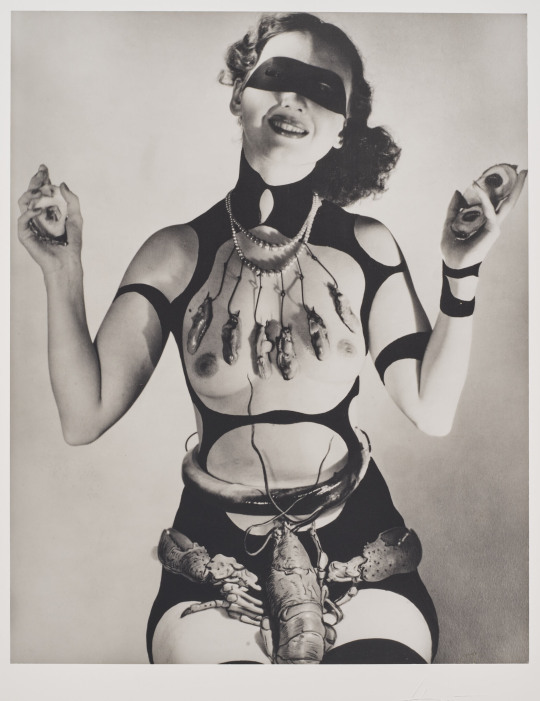
Horst P. Horst (1906–1999) ~ Costume design by Salvador Dali for ���Dream of Venus’, 1939 | src Christie’s
view & read more on wordPress

Horst P. Horst (1906–1999) ~ Costume design by Salvador Dalí for ‘Dream of Venus’ (Lobster # 1), 1939 | src Christie’s
In June 1939 Salvador Dalí designed a pavilion for the New York World’s Fair built by the architect Ian Woodner. The building was named Dream of Venus. The pavilion…
view & read more on wordPress
#costume design#surrealism#dalí#Dream of Venus#female nude#Horst#Horst P. Horst#lobster#masked women#women with masks#NY World Fair#NYC World Fair#pavilion#Salvador Dalí#salvador dali#surreal costume#surrealisme#1930s#surrealist artist#surrealist painter#world fair 1939#dali
283 notes
·
View notes
Text
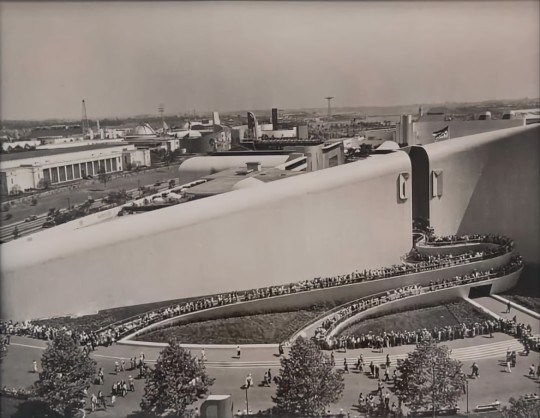
#1939#general motors#new york#new york world's fair#chevrolet#oldsmobile#pontiac#buick#cadillac#30's design#30's#30s
8 notes
·
View notes
Text

The band of the Coldstream Guards, in full dress, march through the streets of Manhattan on April 28, 1939. They were there to play for a month in the British pavilion of the World's Fair.
The Coldstream Guards are infantry soldiers who specialize in light role operations, such as reconnaissance and machine gun operation. But their most famous duty is guarding Windsor Castle and Buckingham Palace. They are the ones who take part in the Changing of the Guard.
Photo: Associated Press
#vintage New York#1930s#Coldstream Guards#1939 World's Fair#NY World's Fair 1939#band#soldiers march#marching soldiers#parade#April 28#28 April#Changing of the Guard
28 notes
·
View notes
Text
If you were to attend the 1939 World’s Fair, you would be greeted with two structures named Trylon and Perisphere. The former was a tall, spire-like structure equipped with what was then the world’s longest escalator. The latter was a humongous sphere. These two modernist structures were the Fair’s mascots.
By stepping into the Peripshere, a new world would be unveiled to you. Inside, a diorama of a future utopian city was constructed called “Democracity.” It was designed to be inhabited by a million and a half people, covering 11,000 square miles.
Trylon and Perisphere, along with Democracity inside, were the symbolic heart of the Fair. But the branding behind it all was intentional for more reasons than one would initially assume. The idea was created by the Fair’s publicity director, Edward Bernays. Bernays was Sigmund Freud’s cousin, known as the man chiefly responsible for bringing his psychoanalytic theories to the United States during the 1920s.
While Sigmund himself fell into despondency in Europe after World War I, Bernays became widely successful in the United States. Using ideas of the unconscious, he quickly gained a reputation as someone who could conjure up mass public opinion for products and issues like no one else. While his later critics likened it to “manipulation,” Bernays himself called it “public relations,” a term he coined.
Yet, reading his work, one finds a deeply cynical man. Bernays rationalized his activities by arguing that the management of mass desire was preferable to the alternative—that is, “letting the unconscious run wild” with its repressed urges. If these dark forces were actually unleashed, he believed, they could undo society itself. Consumerism was hence viewed as a bulwark against the primitive mind of the crowd, and managing its desires was rationalized as necessary in saving society against itself. As he stated openly in his work Propaganda (1928), “the conscious and intelligent manipulation of the organized habits and opinions of the masses is an important element in democratic society.” He was therefore one of the first theorists of what can be called "managed democracy."
Whether he really believed in his own rationalization or not, Bernays did become incredibly wealthy from his services. By the late 1920s, he was “living in a suite of rooms in one of New York’s most expensive hotels, where he gave frequent parties.” According to an employee of Bernays, the events were a “who’s who” of the business elite, the arts, media leaders, and the mayor himself. In due time, his clients also included those within politics and the state. He became a "sort of magician" of public opinion, even though he openly viewed this same public with open contempt. Given his reputation, it was unsurprising that Bernays was tapped for the 1939 New York World’s Fair.
Given that the American public was just coming out of the Great Depression, it was known that the reputation of “big business” in the United States was at historic lows. By framing the World’s Fair through the prism of desire, Bernays sought to rehabilitate this perception by giving Americans an open door—one that they themselves did not even know they wanted. Bernays’s daughter confirms this aspiration of his in an interview with Adam Curtis for his documentary A Century of the Self (2002).
Anna Bernays: To my father, the World’s Fair was an opportunity… Capitalism in a democracy, democracy and capitalism in marriage. It was consumerist, but at the same time you inferred in a funny way that democracy and capitalism went together.
Adam Curtis [continues]: The vision it portrayed was of a new democracy in which businesses responded to people’s innermost desires in a way politicians could never do. But it was a form of democracy that viewed people not as active citizens… but as passive consumers… [which] Bernays believed was the key to control in a mass democracy.
As Curtis makes clear, this thinking reached its symbolic high point at the 1939 World’s Fair. A democratic vision was then constructed by its very own skeptic, someone who viewed democracy as nothing other than a form of social management. Historian of public relations, Stewart Ewen, summarized this view in an interview with Adam Curtis:
“It’s not that the people are in charge, but that the people’s desires are in charge. The people exercise no decision-making power within this environment. So democracy is reduced from something which assumes an active citizenry to the idea of the public as passive consumers driven primarily by instinctual or unconscious desires, and if you can trigger those needs and desires, you can get what you want from them.”
At the end of the century, the consequences of this vision would be criticized by writer Christopher Lasch. Published after his death in 1994, Lasch wondered whether American democracy was now merely living off the “borrowed capital of moral and religious traditions antedating the rise of liberalism." Lasch was a critic of the kind of managed democracy that began to emerge around Bernays's time. By the 1990s, the consequences had become self-evident: when Lasch was writing, civic participation had sunk to its lowest point since World War II.
Perhaps this long trajectory—triumphantly advertised as a "new horizon" at the 1939 World’s Fair—helps explain why the state’s competency and ability to execute basic functions has deteriorated so badly in our own time. Needless to say, Bernays's model of managed democracy was not exactly resilient and built to last.
Decades later during the 1970s, optimism would dry up amid scandal as institutional trust collapsed, exposing the hollowness of this consumer model of democracy outright for the first time. The fact that the United States has still not recovered from that “crisis of confidence” is not accidental: the ultimate outcome of a Bernaysian model of managed democracy is not renewal amid crisis, but rather an entrenchment of its old managerial ways, because it has so little of an active public to draw upon.
#1939 40 world's fair#worlds fair#1939 worlds fair#1939#democracy#capitalism#edward bernays#christopher lasch#progress#futurama#public relations#managed democracy#the beginning of the end#america#substack#sigmund freud#propaganda#propagandists
26 notes
·
View notes
Photo

World’s Fair of 1940 - New York. Admission 50¢.
#new york city#vintage illustration#vintage posters#1939 world’s fair#world’s fair#new york world's fair
15 notes
·
View notes